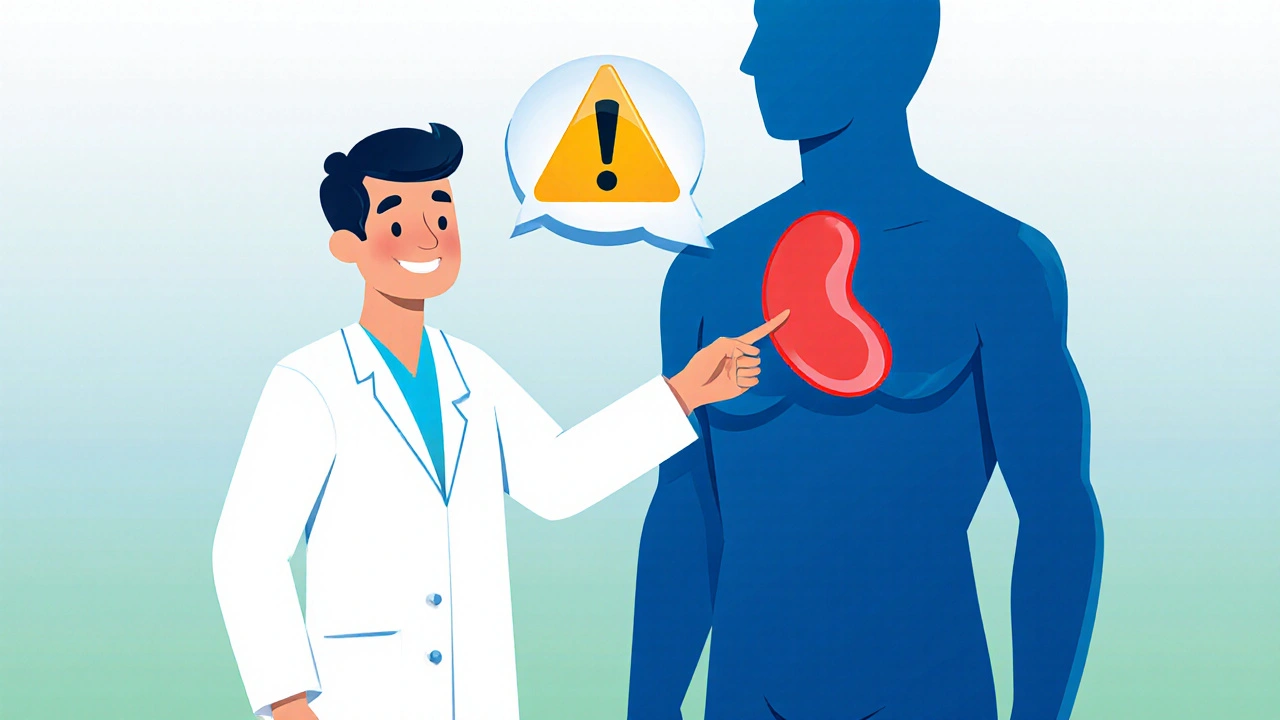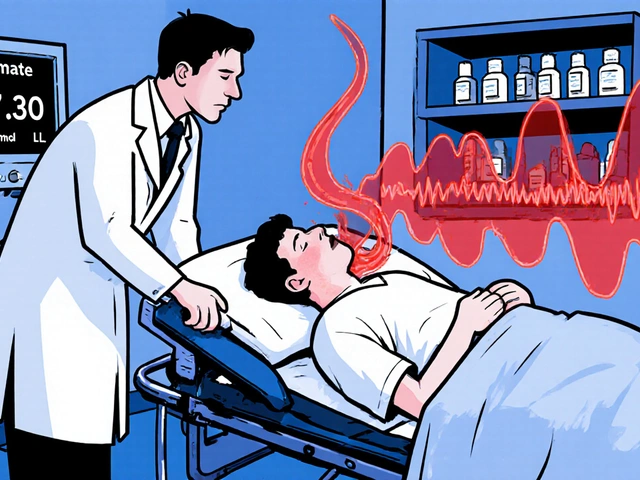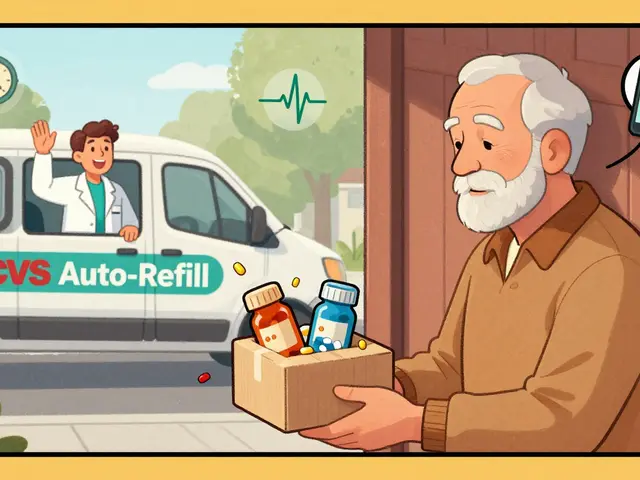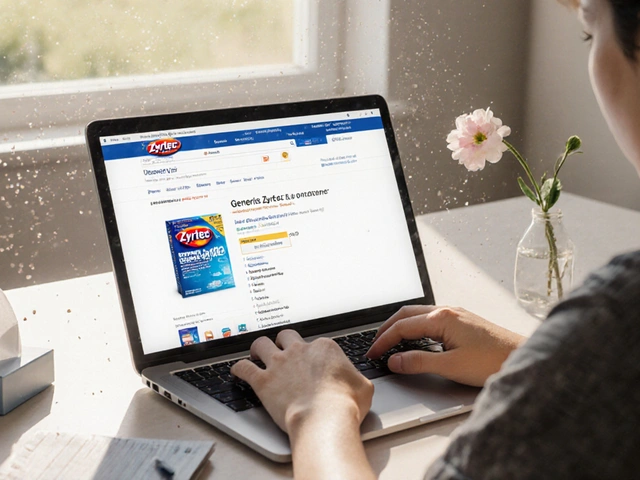Cholesterol Risk Calculator
Heart Disease Risk Assessment
Enter your cholesterol levels to understand your heart disease risk. Based on guidelines from medical professionals.
When doctors warn about high blood cholesterol is a condition where the concentration of cholesterol‑carrying lipoproteins in the bloodstream exceeds healthy thresholds, they’re pointing to a problem that can quietly damage your heart for years before you feel anything.
Understanding the impact of high blood cholesterol on your heart can save lives. This guide walks you through what cholesterol actually is, why it matters for heart disease, how the body builds plaque, and what you can do-today and tomorrow-to keep your arteries clear.
What Is Cholesterol and How Is It Measured?
Cholesterol is a waxy, fat‑like substance essential for cell membranes, hormone production, and vitamin D synthesis. The liver makes most of it, but you also get it from animal‑based foods. Blood tests break cholesterol into three main components:
- Low‑density lipoprotein (LDL) - the “bad” cholesterol that delivers cholesterol to arterial walls.
- High‑density lipoprotein (HDL) - the “good” cholesterol that sweeps excess cholesterol back to the liver.
- Triglycerides - a type of fat that, when elevated, often pairs with high LDL and low HDL.
Typical reference ranges (in mg/dL) for adults are:
- LDL: < 100 (optimal) - 130 (borderline high) - >160 (high)
- HDL: >60 (protective) - 40‑59 (average) - <40 (increased risk for men) - <50 (increased risk for women)
- Triglycerides: <150 (normal) - 150‑199 (borderline high) - 200‑499 (high) - ≥500 (very high)
How High Blood Cholesterol Leads to Heart Disease
The connection isn’t a simple cause‑and‑effect; it’s a cascade that starts with the inner lining of arteries, the endothelium - a thin, delicate tissue that regulates blood flow. When LDL particles penetrate a damaged endothelium, they become oxidized and trigger an immune response. White blood cells, called macrophages, engulf the oxidized LDL and turn into foam cells. Over time, foam cells accumulate and form atherosclerotic plaque, a fatty deposit that stiffens and narrows the artery.
As plaque builds, it reduces oxygen‑rich blood reaching the heart muscle. If a plaque ruptures, a clot can form and completely block blood flow, causing a heart attack. This whole process-starting from elevated LDL, endothelial injury, plaque formation, and eventual blockage-is the biological pathway that links high blood cholesterol to heart disease, the umbrella term for conditions like coronary artery disease, heart attack, and angina.
Key Risk Factors That Amplify the Cholesterol‑Heart Disease Link
Not everyone with high LDL gets a heart attack, and not everyone with a heart attack had high LDL. Several other factors interact with cholesterol levels:
- Age and gender: Men under 55 and women after menopause face higher risk.
- Blood pressure: Hypertension stresses artery walls, making them more permeable to LDL.
- Smoking: Chemicals damage the endothelium and lower HDL.
- Diabetes: High blood sugar modifies LDL particles, making them more likely to oxidize.
- Family history: Genetic disorders like familial hypercholesterolemia can triple LDL levels from birth.
When these factors stack, the chance of plaque buildup accelerates dramatically.

LDL vs. HDL: The Quick Comparison
| Attribute | LDL (Bad) | HDL (Good) |
|---|---|---|
| Primary Function | Delivers cholesterol to cells and arterial walls | Removes excess cholesterol and returns it to the liver |
| Ideal Blood Level (mg/dL) | <100 (optimal) | >60 (protective) |
| Impact on Atherosclerosis | Promotes plaque formation when oxidized | Helps dissolve plaque and prevents buildup |
| Typical Lifestyle Influence | Increased by saturated fats, trans fats, and sedentary living | Boosted by aerobic exercise, healthy fats, and moderate alcohol |
How to Test Your Cholesterol Accurately
The gold standard is a fasting lipid panel, where you avoid food for 9‑12 hours before the blood draw. The test returns total cholesterol, LDL, HDL, and triglycerides. However, non‑fasting tests are gaining acceptance because they reflect real‑world conditions and still predict risk well.
Ask your clinician about the following metrics to get a full picture:
- Non‑HDL cholesterol (total minus HDL) - a strong predictor of heart disease.
- Apolipoprotein B (ApoB) - counts the number of atherogenic particles, useful for patients with metabolic syndrome.
- LDL particle size - small dense LDL particles are more atherogenic than large buoyant ones.
- High‑sensitivity C‑reactive protein (hs‑CRP) - an inflammation marker that adds risk context.

Lifestyle Strategies That Lower LDL and Raise HDL
Medication isn’t the only tool. Here are evidence‑backed habits that reshape your lipid profile:
- Eat more soluble fiber: Oats, barley, beans, and apples bind cholesterol in the gut and reduce absorption.
- Swap saturated fats for unsaturated fats: Olive oil, avocado, nuts, and fatty fish provide omega‑3s that lower triglycerides and modestly raise HDL.
- Exercise regularly: At least 150 minutes of moderate aerobic activity (brisk walking, cycling) each week can raise HDL by 5‑10%.
- Maintain a healthy weight: Losing 5‑10% of body weight often drops LDL by 5‑15%.
- Quit smoking: Within weeks, HDL rises and endothelial function improves.
- Limit alcohol: Moderate intake (up to one drink per day for women, two for men) can boost HDL, but excess raises triglycerides.
Medical Treatments When Lifestyle Isn’t Enough
For many, especially those with familial hypercholesterolemia or existing heart disease, doctors prescribe medications. The most common classes are:
- Statins - inhibit HMG‑CoA reductase, the enzyme that makes cholesterol in the liver. They lower LDL by 20‑60% and modestly raise HDL.
- PCSK9 inhibitors - monoclonal antibodies that boost LDL‑receptor recycling, cutting LDL by up to 70%.
- Ezetimibe - blocks cholesterol absorption in the intestine, useful when statins alone aren’t enough.
- Fibrates - primarily lower triglycerides and raise HDL, often added for mixed dyslipidemia.
Regular monitoring is key. Doctors typically check lipid panels 4‑12 weeks after starting or adjusting therapy.
Putting It All Together: A Personal Action Plan
Here’s a simple checklist you can follow this week:
- Schedule a fasting lipid panel if you haven’t had one in the past year.
- Swap one daily snack for a high‑fiber option (e.g., a bowl of oatmeal with berries).
- Take a 30‑minute brisk walk after dinner at least three times this week.
- Write down any family history of heart attacks or high cholesterol and bring it to your doctor.
- If you smoke, research local cessation programs and make an appointment.
Every step you take nudges your LDL lower and your heart health higher. Remember, the goal isn’t just a number on a lab report; it’s a longer, healthier life.
What LDL level is considered dangerous?
An LDL above 160 mg/dL is classified as high and significantly raises the risk of atherosclerotic plaque. For people with existing heart disease or diabetes, many doctors aim for LDL under 70 mg/dL.
Can a normal total cholesterol mask a problem?
Yes. Total cholesterol can appear normal while LDL is high and HDL is low. That’s why the full lipid panel (including non‑HDL and HDL) is essential for accurate risk assessment.
Do statins have side effects?
The most common side effects are mild muscle aches and occasional digestive upset. Serious complications are rare, and the cardiovascular benefits usually outweigh the risks.
How quickly can lifestyle changes improve cholesterol?
Within 4‑6 weeks of adopting a fiber‑rich diet, regular aerobic exercise, and weight loss, many people see a 5‑10% reduction in LDL and a modest rise in HDL.
Is high cholesterol always hereditary?
Genetics play a big role-especially in familial hypercholesterolemia-but diet, activity level, and other health conditions can also push cholesterol into the high range.





barnabas jacob
Yo, if you keep ignorin the LDL spike you’re basically signin a death warrant for your coronray arteries, and the cholestrol cascade that follows is nothing short of a metabolic apocalypse in plain sight.
jessie cole
Allow me to commend your curiosity; understanding cholesterol is the first heroic step toward safeguarding your heart, and with disciplined effort you shall triumph over this silent adversary.
Kirsten Youtsey
One must question the very foundations upon which mainstream cardiology builds its cholesterol narrative, for the selective publication bias betrays a hidden agenda orchestrated by pharmaceutical oligarchs.
Matthew Hall
Listen, the whole LDL hype is just a smoke‑screen cooked up by the elite to keep us chained to endless prescriptions while the real culprits-industrial fats-slip right under the radar.
Vijaypal Yadav
The synthesis of endogenous cholesterol occurs via the mevalonate pathway, a critical metabolic route regulated by HMG‑CoA reductase, which is precisely the target of statin therapy.
Ron Lanham
It is incumbent upon each individual to recognize that the neglect of lipid monitoring constitutes an ethical lapse of the highest order; we are not merely passive vessels but custodians of our own cardiovascular destiny. The data are unequivocal: elevated LDL encroaches upon arterial intima, fostering atheromatous plaque that narrows perfusion pathways. Moreover, the interplay between low HDL and high triglycerides compounds this peril, accelerating endothelial dysfunction. One must therefore adopt a proactive stance, integrating regular panel assessments into routine health maintenance. Dietary vigilance, encompassing reduced saturated fat intake and increased soluble fiber, provides a tangible lever for modulating serum lipids. Physical activity, by enhancing reverse cholesterol transport, further attenuates plaque formation. Pharmacological intervention, when warranted, should be embraced without stigma, for statins have demonstrably diminished morbidity in countless trials. Yet, adherence remains a societal challenge, undermined by misinformation and complacency. Education, therefore, becomes a moral imperative, fostering informed consent and shared decision‑making. Communities can rally around public‑health initiatives that supply affordable testing and counseling. Ultimately, the collective will to lower cholesterol reflects a broader commitment to longevity and quality of life. Let us not shirk from this responsibility, for the heart beats not only for the individual but for the fabric of society itself.
Andrew Hernandez
Sharing knowledge about heart health strengthens our community and honors the wellness traditions that have guided generations.
Sebastian Green
I hear your encouragement, and it truly lifts those of us navigating the confusing maze of lipid panels.
Wesley Humble
While your alarmist tone may resonate with lay audiences, the epidemiological data demonstrate a nuanced risk stratification wherein LDL levels above 160 mg/dL correlate with a relative risk increase of approximately 1.5‑fold for major adverse cardiac events, 📊 underscoring the importance of calibrated clinical judgment.
Deja Scott
Your explanation of the mevalonate pathway offers a concise insight that many will appreciate.
Natalie Morgan
Delving deeper into dietary influences reveals that soluble fiber, found in oats and legumes, can bind bile acids and lower LDL concentrations, an actionable tip for anyone seeking measurable improvement.
Mahesh Upadhyay
This fiber fact is a game‑changer-ignore it at your own peril.
Rajesh Myadam
Thank you for your thorough perspective; it reminds us that personal responsibility and community support go hand in hand in the fight against cardiovascular disease.
Alex Pegg
All this cholesterol hype is just a Western panic, nothing to worry about.
laura wood
I understand your skepticism, yet countless studies across diverse populations highlight the tangible benefits of managing cholesterol levels.